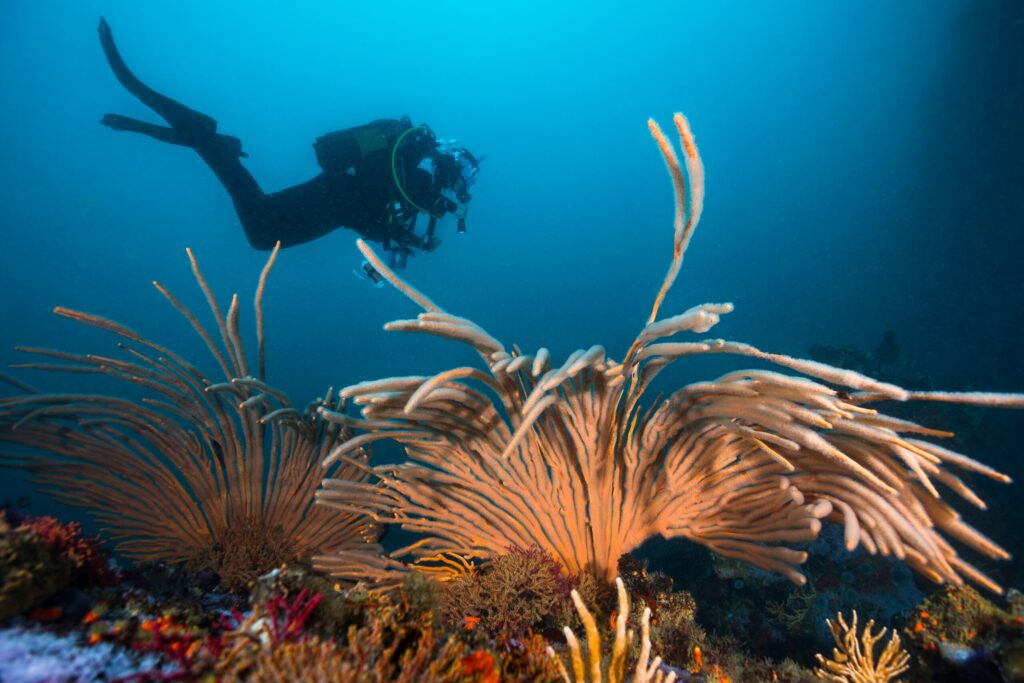What is Upwelling?
If you’ve spent some time around Cape Town, you might be familiar with those beautiful, calm, crystal-clear ocean days around the Atlantic seaboard.
If you’ve ventured further and spent time inside the ocean, you might know that the same tropical crystal clear hues mean frosty water temperatures.
But why is this so? And how is the phenomenon of upwelling responsible for causing this?
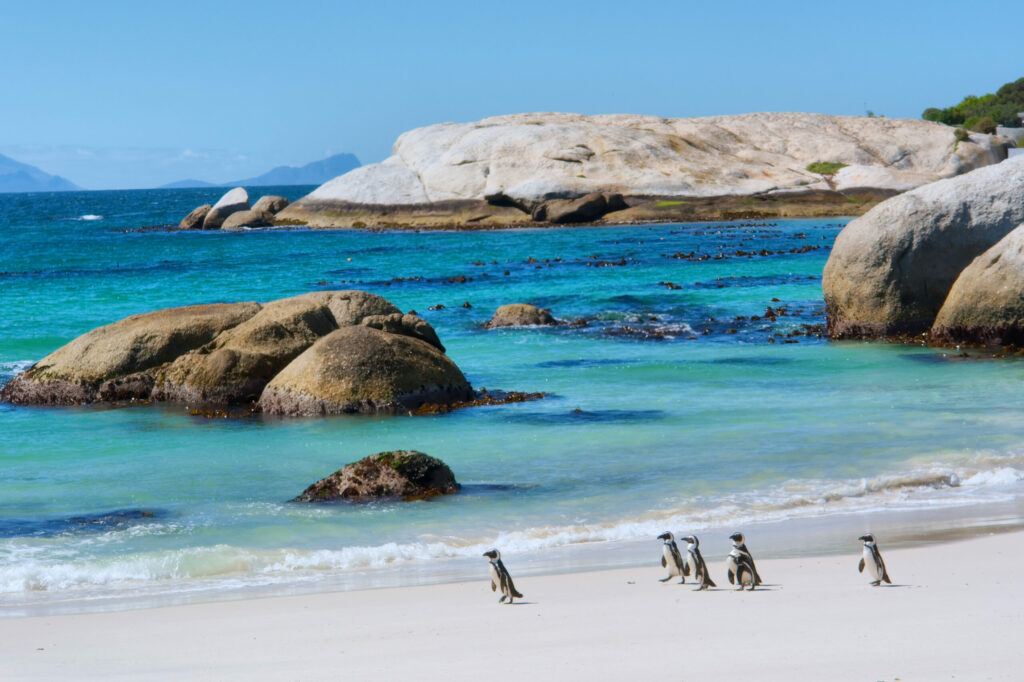
The crystal blue waters around Boulders Beach penguin colony in Cape Town after a strong North-westerly wind. Image by PhotoSky | Shutterstock.
What is upwelling?
Insert encyclopedic entry. Upwelling is a process in which currents bring deep, cold water to the ocean’s surface. Upwelling is a result of winds and the rotation of the Earth.
Winds blowing across the ocean surface push water away (we call these ‘offshore winds’, which are North-easterly in direction for False Bay and South-easterly for the Atlantic). Water then rises up from beneath the surface to replace the water that was pushed away. This process is known as “upwelling.”
Water that rises to the surface due to upwelling is typically colder and is rich in nutrients. These nutrients “fertilise” surface waters, meaning that these surface waters often have high biological productivity. Therefore, good fishing grounds are typically found where upwelling is common.
Science of Upwellings
The Earth rotates on its axis from west to east. Because of this rotation, winds tend to veer right in the northern hemisphere and left in the southern hemisphere. This is known as the Coriolis effect and is largely responsible for upwelling in coastal regions.
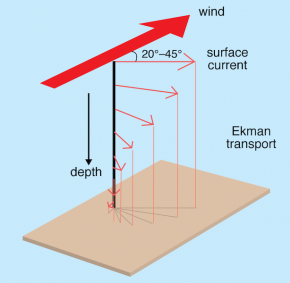
The Ekman spiral describes the motion or “Ekman transport” of water influenced by wind and the Coriolis effect. Image by Byron Inouye.
Upwellings occur along the coasts when winds move water towards or away from the coastline. Surface water moving away from land leads to upwelling, while downwelling occurs when surface water moves towards the land.
Along the Atlantic coast of Cape Town, the local prevailing winds blow towards the southeast. Ekman transport moves the surface layer 90 degrees to the right of the wind, meaning the net Ekman transport is in an offshore direction. The water displaced near the coast is replaced by cold, nutrient-rich, deeper water that is brought to the surface through upwelling, leading to high productivity.
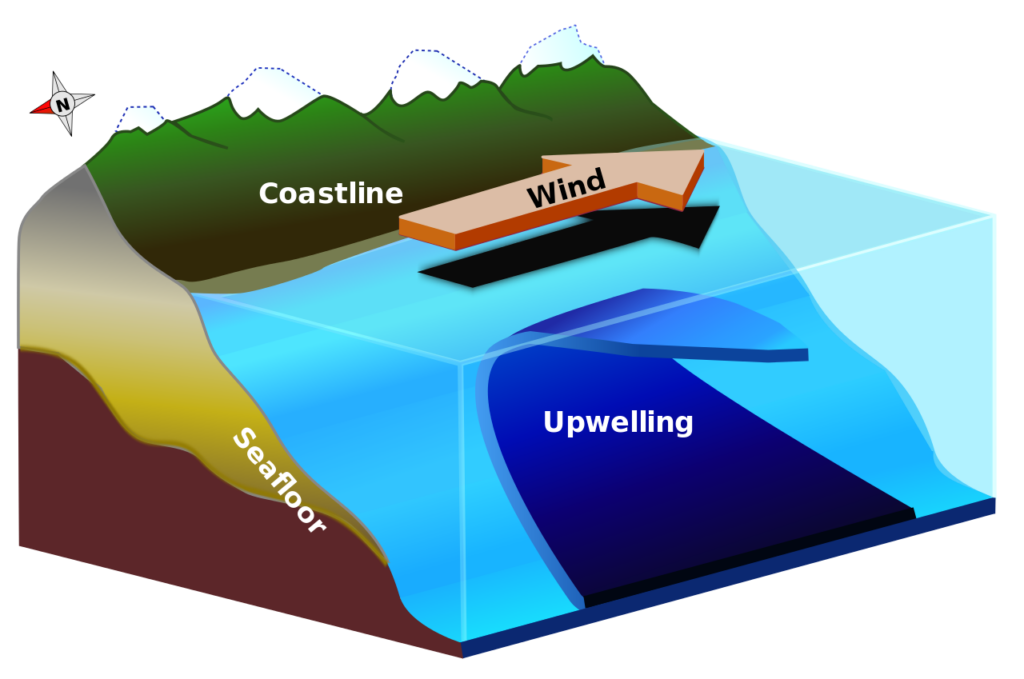
Coastal upwelling. As the wind blows along a coastline, Ekman transport moves the surface layer in a direction 90o to the wind. In this figure, it is to the right of the wind, indicating a Northern Hemisphere location. As surface water moves offshore it it replaced by upwelled deeper water. Image by Lichtspiel, via Wikimedia Commons).
Effects of Upwelling
Biodiversity and productivity
Because the deep water brought to the surface is often rich in nutrients, coastal upwelling supports the growth of seaweed and plankton. These, in turn, provide food for fish, marine mammals, and birds.
Upwelling generates some of the world’s most fertile ecosystems. Overall, coastal upwelling regions only cover 1% of the total area of the world’s oceans, but they provide about 50% of the fish harvest brought back to shore by the world’s fisheries.
Animal movement
Upwelling affects the movement of animal life in the area. Tiny larvae (the developing forms of many fish and invertebrates) can drift around in ocean currents for long periods of time. A strong upwelling event can wash the larvae far offshore, endangering their survival.
Coastal climate
The cold water welling up to the surface cools the air in the region. This promotes the development of sea fog. Cape Town is famous for its chilly, foggy summers, brought on by seasonal upwelling in the area.
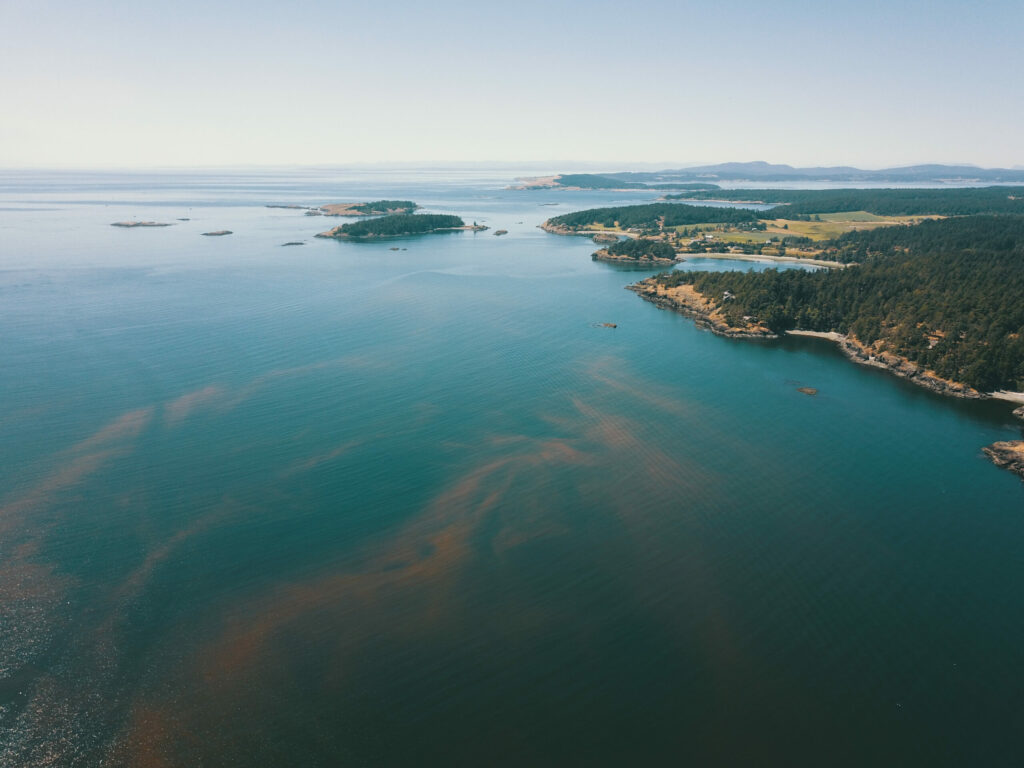
A coastal ‘algae bloom’, caused by the nutrient-rich waters brought about by an upwelling. Image by adam spahn | Shutterstock.
Effects on divers
Now that you know how upwellings work, it is easy to understand why the ‘tropical’ blue water is actually freezing cold! The cold water from below brings good visibility, making for great diving conditions (that is, if you’re brave enough to venture into the water, reaching temperatures as low as 6 degrees Celcius).
When you come across these beautiful conditions, we recommend you explore them quickly! The nutrients rich water is the perfect playing ground for little algae called phytoplankton to bloom and create large, low-visibility water patches. The good news is their metabolic processes quickly heat the water temperatures back up again. Bad news, you likely won’t be able to see anything past your fins.


